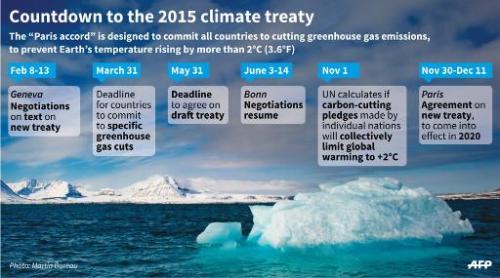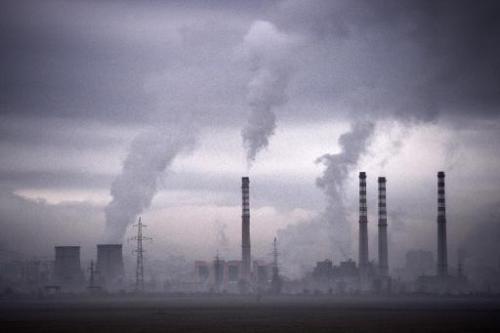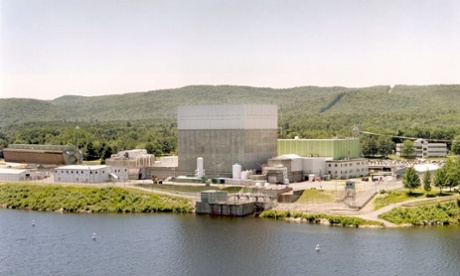
 Dec. 30, 2014 – Please pass this onto a friend!
Dec. 30, 2014 – Please pass this onto a friend!
Help OCAA build the vision of the Ontario we all want – a province where clean, renewable energy is used as efficiently as possible. We’re small but mighty and depend on support from you! Blessings of the holiday season…
The World
☢ Vermont shuts down nuclear power plant to make way for renewable energy “Today, thanks to investments in renewable energy such as solar, Vermont’s energy future is on a different, more sustainable path that is creating jobs, reducing energy costs for Vermonters and slowing climate change,” said Vermont Governor Shumlin. Now that’s leadership.
☢The Aboriginal peoples of Quebec stand together against uranium at the final hearings of the BAPE in Montreal “The Cree Nation speaks in one voice – united with the other Aboriginal peoples of Quebec – when we insist that our lands remain free of uranium mining and uranium waste.”
☢ Fukushima and the institutional invisibility of nuclear disaster If nuclear power is so safe, why the low limits on nuclear liabilities?
☢ Fuel Rods are removed from damaged Fukushima Reactor TEPCO has safely removed all the radioactive fuel from the most vulnerable of the four heavily damaged reactor buildings, No. 4.
☢ Cyber-attacks on South Korean nuclear power operator continue
☢ Ukraine turns off reactor at its most powerful nuclear plant after ‘accident’
☢ ‘Wishful thinking and misinformation’: An open letter to nuclear lobbyists Start with the proliferation problem since the multifaceted and repeatedly-demonstrated links
☢ The Last Radium Girl Dies at 107 Radium wristwatches were manufactured right here in America, the tiny numbers painted by young women. By the mid-1920s, dial painters fell ill and many died, afflicted with horrific diseases. They became known as the radium girls.
☢ 3 min. stunning video on Chernobyl today (repeat from last newsletter, in case you misssed it)
Ontario
☢ 9 good reasons why we need a public review of a Bruce Nuclear deal The Ontario Power Authority and Bruce Power are secretly negotiating a multi-billion dollar deal to rebuild four aging reactors at the Bruce B Nuclear Station. Here are 9 good reasons why Premier Kathleen Wynne should send any agreement to the Ontario Energy Board (OEB) for a full public review.
☢ In this 18 min. video Jack Gibbons, OCAA explains how and why we can avoid rebuilding Darlington and Bruce nuclear stations with a combination of lower cost water power from Quebec, conservation and made-in-ON green energy.
☢ P.E.I. negotiation to buy water power from Quebec “We’re always looking for ways to lower down our electricity costs but also in terms of providing more green energy for our province,” Premier Ghiz said. Likewise, Ontario should negotiate a long term deal with QC rather than rebuild Darlington.
Renewables and Conservation
☼ How Solar Power Could Slay the Fossil Fuel and Nuclear Empire by 2030 In just 15 years, the world as we know it will have transformed forever. The age of oil, gas, coal and nuclear will be over.
☼ All over the world, renewables are beating nuclear Country by country, renewables are taking over the world. Renewables get cheaper, nuclear gets more expensive. Yet Ontario remains firmly stuck in a 1950s vision of the future.
☼ Quebec buys wind power for 7.6 cents / kWh, a much better deal than ON nuclear
☼ Green Budget Coalition’s Recommendations for Federal Budget 2015 include recommendations on subsidy reform, carbon pricing, power storage, EV recharging stations, climate change adaptation, global climate finance, energy efficiency/home retrofits, and funding for EA’s and aboriginal consultation.
☼ At COP 20 in Lima: The Buzz about Renewable Energy The real buzz about the incredible opportunity to drive down global emissions by investing in renewable energy and energy efficiency.
☼ Health Canada Report: Wind Energy Harmless Health Canada just completed a study (worth $2.1 million) that is now the latest of at least 17 other such large-scale studies to prove whether wind energy can make people sick, and they found the same uneventful result: that wind energy is safe.
☼ The Ottawa Renewable Energy Cooperative is conducting its 3rd Preference Share offering to raise money for 6 new projects in Ottawa. RRSP eligible. Dividends paid yearly. Ottawa residents can join OREC now and become part of the solar solution.
☼ Austin, Texas Plans To Get Over Half Of Its Power From Renewables by 2025 mostly with solar, conservation and storage.
☼ Home Energy Loan Program is a new financing tool offered by the City of Toronto to help you improve your home’s energy efficiency and save money.
☼ The switch to renewable power is a battle we cannot afford to lose Peru plans to generate 60% of its electricity from renewable sources by 2024; Chile doubled its total renewable power capacity in 2014; Germany and Sweden will be carbon-free by 2050. The list goes on, including 144 countries with renewable energy targets, 50 countries supporting a total phase-out of carbon emissions by 2050 and 100 countries supporting zero emissions by 2100.
Take Action!
☢ Please send Premier Wynne a message urging her to send any Bruce Nuclear Power deal to the OEB for review
☢ Call for a Public Review of the Costs of Bruce B Nuclear Station A Green Party of ON petition
☢ Please send Premier Wynne a message urging her to make a deal with Quebec instead of wasting billions of dollars on high-risk nuclear projects. It is the right thing to do for both provinces.
☢ Stop plans to build small nuclear reactors in Saskatchewan to power oil extraction from the Alberta Tar Sands Please sign the petition.
☢ Quebec imports can save us $1 billion per year As our new pamphlet explains, importing clean hydro power from Quebec is a much cheaper way to meet our electricity needs than re-building the Darlington Nuclear Plant. Order free copies today to distribute to your neighbours, family and friends
☢ Stop the Great Lakes Nuclear Dump Please sign the petition to oppose OPG’s plans to bury their nuclear waste on the shore of Lake Huron. And urge your elected officials to pass a resolution to oppose the nuclear dump on the Great Lake Huron. There are already 136 jurisdictions – representing over 16 million people – that have done so! See the list here
Events
☢ Resistance and Survival Find out what’s happening on the front lines of climate resistance on Canada’s east coast. Toronto Jan. 5, Peterborough Jan. 7, Ottawa Jan. 8, Montreal Jan. 9
☢ This Nuclear Age Free weekly public lectures on public health in a nuclear age. Wednesdays, 4 – 6 p.m., Jan. 7 – April 1, University of Toronto
☢ Ontario, Québec, Electricity and Climate Change: Advancing the Dialogue Friday, Jan. 9, 8:30 – 10:30 .m. York University, Toronto. Free.
☢ World Uranium Symposium and Film Festival, April 13 - 16, 2015, Quebec City
follow on Twitter | friend on Facebook | forward to a friend
Copyright © 2014 Ontario Clean Air Alliance, All rights reserved.
Our mailing address is:
Ontario Clean Air Alliance
160 John St, #300
Toronto,OnM5V 2E5
Canada







